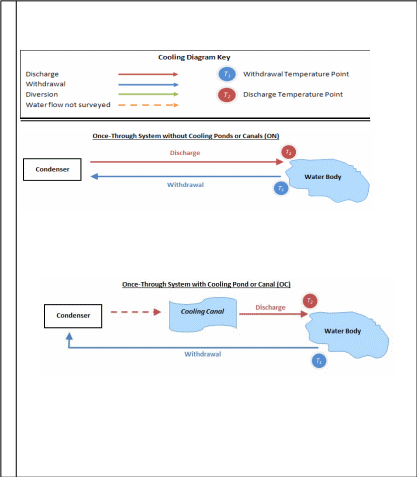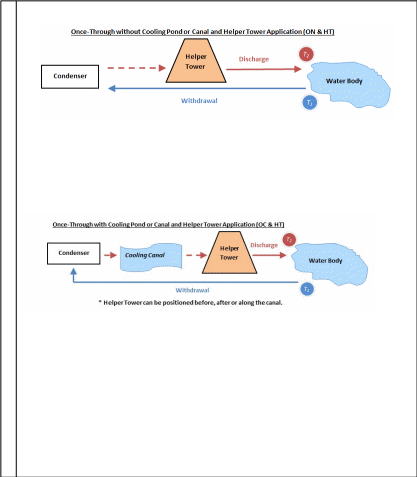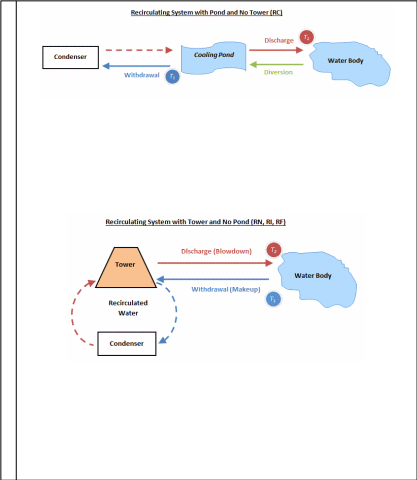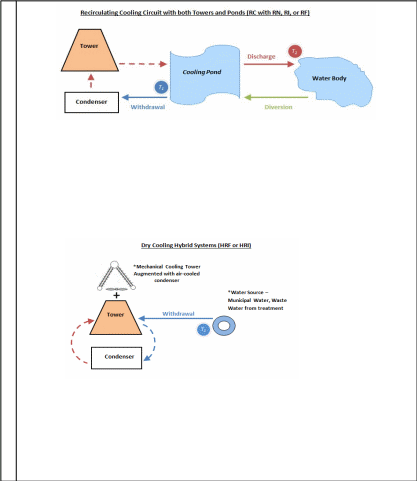Supplemental Power Plant Operations Report
Electric Power and Renewable Electricity Surveys
EIA-923 Instructions
Supplemental Power Plant Operations Report
OMB: 1905-0129
|
FORM EIA-923 POWER PLANT OPERATIONS REPORT INSTRUCTIONS |
OMB No. 1905-0129 Approval Expires: xx/xx/xxxx Burden: 4.4 Hours
|
PURPOSE |
Form EIA-923 collects information on the operation of electric power plants and combined heat and power (CHP) plants in the United States (see Required Respondents below). Data collected on this form include electric power generation, fuel consumption, fossil fuel stocks, delivered fossil fuel cost, combustion by-products, operational cooling water data, and operational data for NOx, SO2, particulate matter, mercury, and acid gas control equipment. These data are used to monitor the status and trends of the electric power industry and appear in U.S. Energy Information Administration (EIA) publications and public databases. |
REQUIRED RESPON- DENTS |
Form EIA-923 is a mandatory report for all electric power plants and CHP plants that meet the following criteria:
Monthly Respondents: To lessen the reporting burden, a sample of plants is collected on a monthly basis. Monthly respondents report Schedules 1 through 4B, and Schedule 9. Annual Respondents: Plants that are not selected to respond monthly must respond to all applicable schedules annually for the calendar year. Supplemental Respondents: Plants in the monthly sample are required to report Schedules 6 to 8 annually if the criteria for those schedules are applicable. |
RESPONSE DUE |
Monthly respondents are required to file Schedules 1 through 4B and Schedule 9 of this form with EIA by the last day of the month following the reporting period. For example, if reporting for July, survey data are due to EIA on August 31.
Annual and Supplemental respondents are required to file the form approximately 45 days after the online form opens for annual collection.
Please note that EIA will make every effort to open the annual and supplemental surveys on the first business day of January following the reporting year. |
METHODS OF FILING RESPONSE |
Submit your data electronically using EIA’s secure e-file system. This system uses security protocols to protect information against unauthorized access during transmission.
If you have not registered with the e-file Single Sign-On (SSO) system, send an email message requesting assistance to: [email protected]. If you have registered with SSO, log on at: https://signon.eia.gov/ssoserver/login Retain a completed copy of this survey form for your files. Form EIA-923 Fax: 202-287-1938 |
CONTACTS |
For questions about or problems with the online filing system, send an email to the Form EIA-923 mailbox. For questions regarding the data requested on the form, contact: |
|
FORM EIA-923 POWER PLANT OPERATIONS REPORT INSTRUCTIONS |
OMB No. 1905-0129 Approval Expires: xx/xx/xxxx Burden: 4.4 Hours |

 GENERAL
INSTRUCTIONS
GENERAL
INSTRUCTIONS
Revisions to Data Previously Reported through the e-file System
Submit revisions to data previously reported as soon as possible after the error or omission is discovered. Do not wait to revise data until the next reporting month’s form is due. Revisions or adjustments to data should be made only to the survey month(s) to which they pertain (i.e., do not adjust the current month to reflect a revision or adjustment to a prior month submission).
Log on to the e-file system, re-key revised data, indicate in Schedule 9 the nature and date of the revision, and resubmit the data. If the e-file form is locked, contact EIA to request the form be opened for revision.
Remember to save and RESUBMIT (click on the SUBMIT button). Resubmitting will allow the validation edits to re-validate the revised data element(s).
Send an email message to [email protected] indicating the following:
the reporting month and year for which data are being revised,
the data that has been revised, and
the date of the revision.
Alternatively, if the e-file system has been closed for the reporting period, please send an email message containing your changes to [email protected], and indicate ‘Revision’ in subject line. Be sure to include your Plant ID, the specific revision, and the month and year that is being revised.
Revisions to Data Previously Reported by Facsimile or Email Message
If you report via facsimile or email, you may send a corrected copy of the form, but be sure to indicate the four items, discussed above, in Schedule 9.
Correcting Prepopulated Information
For e-file users, much of the information on the form is prepopulated by EIA. Verify the administrative information on Schedule 1, and if changes are needed, send revisions via email to [email protected].
Validation Edits
For e-file users, data that fail the interactive validation edits will be amassed into an edit log. Upon hitting the “Submit” button, the system will notify you if there are edits in the log. You will be directed to the log and given the opportunity to either revise the data in question or override the edit flag (thus leaving the response values that triggered the error as is). When an edit is overridden, the system will ask for a comment/explanation. Please leave a comment that explains the anomaly, rather than simply stating the data are correct. Each comment is reviewed by EIA and, if the comment does not sufficiently explain the anomaly, EIA will contact you for clarification.
|
FORM EIA-923 POWER PLANT OPERATIONS REPORT INSTRUCTIONS |
OMB No. 1905-0129 Approval Expires: xx/xx/xxxx
|

 SCHEDULE
1.
IDENTIFICATION
SCHEDULE
1.
IDENTIFICATION
Verify preprinted information. Provide revisions to EIA via email at [email protected].
1. Plant Name, Plant ID, and State: These data are established on the Form EIA-860. Revisions should be coordinated with the Form EIA-860 staff.
2. Survey Contact: Enter the person primarily responsible for completing the form.

Supervisor of Contact Person for Survey: Enter the supervisor of the primary contact as an alternative person in the event the primary contact becomes unavailable. The Survey Contact and Supervisor cannot be the same person.
Report for (Company and Plant): Enter the name of the operating company and plant. The plant identification number is assigned by EIA. Enter the plant state and county, and month or year for which data are being reported. State codes are two-character U.S. Postal Service abbreviations.
Regulatory Status: Indicate if the plant should be considered either a utility-operated regulated plant (plants where costs are recovered through rate regulation) or unregulated plant (independent power producers and commercial and industrial sector plants).
CHP Checkbox: Indicate whether or not this facility is a combined heat and power plant (CHP). A CHP plant produces both electric power and another form of useful thermal output, such as heat and/or steam for industrial processes, district heating/cooling, steam for purchase or hot water) from a common source.
CHP Plant Efficiency: If the CHP checkbox is “YES”, enter the efficiency of the combined heat and power plant. Report the annual average total CHP plant efficiency.
To calculate the total plant efficiency, apply the following formula by dividing the sum of the energy outputs in Btu, including gross generation and useful thermal output, by the sum of the energy inputs (total fuels consumed converted to Btu).

If gross generation is not available, use net generation as an approximation. Total Fuel Consumption
(MMBtu) is found using Schedule 3 fuel quantities multiplied by their average heat content.
SCHEDULE 2. COST AND QUALITY OF FUEL PURCHASES
General Instructions
Required Respondents:
Plants with one or more generating units primarily fueled by coal, natural gas, petroleum coke, distillate fuel oil, or residual fuel oil. Primary Fuel for each generator is reported on the Form EIA-860.
Plants where the total generator nameplate capacity with a Primary Fuel of coal is 50 megawatts or greater; or the total generator nameplate capacity with a Primary Fuel of any combination of natural gas, petroleum coke, distillate fuel oil, or residual fuel oil is 200 megawatts or greater.
Fuel transfer terminals and storage facilities serving generating plants, if the fuel purchases cannot be reported at the plant level.
|
FORM EIA-923 POWER PLANT OPERATIONS REPORT INSTRUCTIONS |
OMB No. 1905-0129 Approval Expires: xx/xx/xxxx
|

 Fuel
transfer
terminals
and storage
facilities
guidelines:
Report
fuel
purchases where
quantity, cost,
and
quality data
CANNOT be
reported
by
the
individual
plants
served by
the fuel
terminal.
Report purchases
either
on
the fuel
terminal
report OR
the plant
report,
not both.
Fuel
terminals
must list
the
plants
served
on
Schedule
4B.
Report transfers
out
as
negative
adjustments
to
stocks on
Schedule 4A.
Fuel
transfer
terminals
and storage
facilities
guidelines:
Report
fuel
purchases where
quantity, cost,
and
quality data
CANNOT be
reported
by
the
individual
plants
served by
the fuel
terminal.
Report purchases
either
on
the fuel
terminal
report OR
the plant
report,
not both.
Fuel
terminals
must list
the
plants
served
on
Schedule
4B.
Report transfers
out
as
negative
adjustments
to
stocks on
Schedule 4A.
Report for each fuel purchase: Report for purchases of all coal types, petroleum coke, distillate and residual fuel oils and natural gas by type of fuel, supplier, purchase type, contract expiration date, average cost per MMBtu, fuel quality, and for coal mine origin. Do not aggregate purchases. Report contract and spot market purchases separately, unless specifically instructed below.
Annual Respondents may aggregate some purchases for the entire year provided the contract type and other identifying information, such as mine origin, are identical. For aggregated data, report weighted average costs and quality data.
Coal Purchases: Report data by supplier and mine source. The mine information is reported on Schedule 2, Part C.
Coal or petroleum coke which will be converted to synthesis gas at an Integrated Gasification Combined-Cycle (IGCC) plant: Report the fuel as it is received (i.e., as coal or petroleum coke).
Petroleum Product Purchases: Report data by fuel type, supplier or broker, or refinery and, if applicable, port of entry. Report purchases of residual fuel oil, distillate fuel oil, and petroleum coke.
Do Not Report the Following: Waste oil, kerosene, jet fuel, propane, or other petroleum products.
Natural Gas Purchases: Report natural gas purchases by supplier. Report each contract purchase (not spot purchases) as separate line items -- never aggregate the contracted purchases. Spot market natural gas purchases from various suppliers may be aggregated where it is impractical to list each individually such as when numerous suppliers are used for many relatively small transactions. However, it is preferable to list each supplier separately. If you aggregate your data, report the weighted average cost and quality.
Do Not Report the Following: Other gases such as manufactured gas (coke oven, refinery, or blast furnace gas), propane, landfill gas, or other miscellaneous gaseous fuels, or natural gas injected into storage. Report stored gas when it is received at the plant as an Adjustment on Schedule 4A. Do not report costs associated with storage.
SCHEDULE 2. PART A. CONTRACT INFORMATION, PURCHASES, AND COSTS
Fuel Supplier Name: Supplier names and fuel codes are preprinted from the previous month’s report. Delete unneeded rows. Add supplier/fuel types from the drop-down lists. If the supplier is not on the list, contact EIA to have a new supplier added. If you choose “Name Pending” while waiting for a new supplier to be added, you MUST report the full supplier name in an override comment in response to the edit flag before the data can be submitted.
Purchase Type or Tolling Agreement: Use the following codes:
C – Contract Purchase – Fuel received under a purchase order or contract with a term of one year or longer. Contracts with a shorter term are considered spot purchases (See below.)
NC – New Contract or Renegotiated Contract Purchase – Fuel received under a purchase order or contract with a duration of one year or longer, under which deliveries were first made during the reporting month
S – Spot-Market Purchase – Fuel received under a purchase order or contract with a duration of less than one year
|
FORM EIA-923 POWER PLANT OPERATIONS REPORT INSTRUCTIONS |
OMB No. 1905-0129 Approval Expires: xx/xx/xxxx
|

 T
– Tolling
Agreement –
Fuel received
under
a tolling
agreement (bartering
arrangement of
fuel for
generation)
T
– Tolling
Agreement –
Fuel received
under
a tolling
agreement (bartering
arrangement of
fuel for
generation)
Contract Expiration Date (MMYY): Report for Purchase Types C and NC the month and the year the purchase order or contract expires. For example, report “1119” for a November “2019” expiration date. This column should be left blank for Purchase Types S and T.
Energy Source: Identify fuels using the energy source codes listed in Table 1 for coal, petroleum coke, natural gas, distillate fuel oil, and residual fuel oil. A complete detailed list of energy sources is included in Table 8.
Units of Measure:
Coal and petroleum coke receipts: short tons on an as-received dry basis (if wet, indicate in a comment on Schedule 9)
Petroleum products’ receipts: barrels
Natural gas: thousands of cubic feet (Mcf)
Quantity Purchased: Report the quantity of the fuel purchases for fuel that will ultimately be used for the generation of electricity and, at combined heat and power plants, for useful thermal output (process steam, district heating/cooling, space heating, or steam delivered to other end users).
As far as possible, do not include fuel that will be used in boilers with no connection to an electric power generator or for use in other equipment. If fuel purchases cannot be separated, provide a comment on Schedule 9, Comments.
Report start-up and flame-stabilization fuels.
When fuel is purchased by and received at the plant and a portion is resold, report the quantity minus the amount resold, but report the original average costs and quality of the purchase.
Total Delivered Cost (for coal, petroleum products, petroleum coke, and natural gas): Enter the delivered cost of the fuel in cents per million Btu (MMBtu) to the nearest 0.1 cent. Include all costs incurred in the purchase and delivery of the fuel to the plant. Do not include adjustments associated with prior months’ fuel costs.
Include any penalties/premiums paid or expected to be paid on the fuel delivered during the month in the delivered price for fuel shipped under contract. Make subsequent adjustments only by revising the cost in the month it was reported. Report only the current month fuel costs associated with the current month fuel deliveries. If a portion of a fuel purchase is resold, report the average cents per MMBtu paid for the original purchase. Do not discount the costs by the revenue received for the sale of the fuel.
For coal, include maintenance and depreciation costs of coal delivered in railcars owned by the plant. Do not include unloading costs.
For natural gas, include the following pipeline charges: fuel losses, transportation reservation charges, balancing costs, and distribution system costs outside of the plant. Because these types of fees can skew the cost of the fuel per MMBtu, provide an explanation in an edit log override comment when the price falls outside the range of expected cost, (e.g., “This price includes a reservation fee of x dollars.”).
|
FORM EIA-923 POWER PLANT OPERATIONS REPORT INSTRUCTIONS |
OMB No. 1905-0129 Approval Expires: xx/xx/xxxx
|


Commodity Cost (for coal, petroleum products, petroleum coke, and natural gas): Report the cost (in cents per million Btu rounded to the nearest 0.1 cent) at the point of first loading (free on board mine or transportation pipeline (FOB)), including taxes and quality-related charges or credits. Do not include loading and unloading charges, dust proofing, freeze conditioning, switching charges, diesel fuel surcharges, pipeline charges, transportation charges, or any other charges relating to the movement of the fuel to the point of use.
In the case of natural gas, the commodity cost is typically the price of the gas FOB the transmission pipeline. In the case of coal, the commodity cost is FOB mine.
For purchases associated with a hedging contract, report the actual fuel supply contract, not the hedge contract. Report the cost net of gains/losses as a result of the contract.
 I
I
|
FORM EIA-923 POWER PLANT OPERATIONS REPORT INSTRUCTIONS |
OMB No. 1905-0129 Approval Expires: xx/xx/xxxx
|
SCHEDULE 2. PART B. QUALITY AND TRANSPORTATION OF COAL, PETROLEUM PRODUCTS, AND PETROLEUM COKE
Fuel Supplier Name, Purchase Type, Quantity Purchased, and Energy Source: Data are prepopulated for e-file users based on the data entered on Schedule 2. Part A.
Heat Content: For all fuels, report the actual (not contractual) average Btu content for each fuel purchase in million (MMBtu) per ton, barrel, or thousand cubic feet. Present data values to the nearest
0.001 MMBtu. Refer to Table 1, below, for approximate heat content ranges.
Sulfur Content: For coal, petroleum coke, and residual fuel oil, reports the sulfur content of the fuel in terms of sulfur percentage by weight. Present data values to the nearest 0.01 percent. Refer to Table 1 for approximate sulfur content ranges.
Ash Content: For coal and petroleum coke, enter the ash content of the fuel in terms of ash percentage by weight. Present data values to the nearest 0.01 percent. Refer to Table 1 for approximate ash content ranges.
Moisture Content: For coal only, enter the moisture content of the fuel in terms of moisture percentage by weight. Present data values to the nearest 0.01 percent. Refer to Table 1 for approximate moisture content ranges.
Mercury Content: For coal only, enter the mercury content in parts per million (ppm). Present data values to the nearest 0.001 ppm. If lab tests of the coal receipts do not include the mercury content, enter the amount specified in the contract with the supplier. Refer to Table 1 for approximate mercury content ranges. If the mercury content is not known, mark the checkbox provided for unavailable mercury content.
Chlorine Content: For coal only, enter the chlorine content in parts per million (ppm). Present data values to the nearest 0.001 ppm. If lab tests of the coal do not include the chlorine content, enter the amount specified in the contract with the supplier. Refer to Table 1 for approximate chlorine content ranges. If the chlorine content is not known, mark the checkbox provided for unavailable chlorine content.
|
FORM EIA-923 POWER PLANT OPERATIONS REPORT INSTRUCTIONS |
OMB No. 1905-0129 Approval Expires: xx/xx/xxxx
|

 Table
1.
Quality of
Fuel
Table
1.
Quality of
Fuel
-
Fuel Code
Fuel Name
Heat Content (per unit)
Sulfur Content (%)
Ash Content
(%)
Moisture Content (%)
Mercury Content (ppm)
Chlorine Content (ppm)
BIT
Bituminous Coal
19 -29
0.4 – 6.0
4.0 – 30.0
2.0 –16.0
0.020 – 0.500
30 -- 3000
LIG
Lignite Coal
10 - 15
0.4 – 3.0
5.0 – 35.0
30.0 – 60.0
0.020 – 0.500
120 -- 300
SUB
Subbituminous Coal
15 - 20
0.2 – 1.5
3.0 – 15.0
10.0 – 45.0
0.020 – 0.200
40 -- 1200
ANT
Anthracite Coal
22 – 29
0.4 – 6.0
4.0 – 30.0
2.0 – 17.0
0.020 – 0.500
30 -- 3000
RC
Refined Coal
20 – 29
0.2 – 6.0
3.0 – 30.0
2.0 – 30.0
0.020 – 0.500
30 -- 3000
WC
Waste Coal
6.5 – 16
0.3 – 6.0
5.0 – 50.0
2.0 – 60.0
0.020 – 1.200
30 -- 3000
PC
Petroleum Coke
24 – 30
1.0 – 7.0
0.1 – 1.2
RFO
Residual Fuel Oil
5.7 – 6.8
0.2 – 4.5
DFO
Distillate Fuel Oil
5.3 – 6.3
NG
Natural Gas
0.8 – 1.2
Fuel Transportation, Primary Mode: Report the method used to transport the fuel over the longest distance from point of origin to the consumer (the point of origin is the mine for coal deliveries). If the fuel was purchased from a broker or a fuel terminal, and the original mode of transportation is unknown to the purchaser, provide a reasonable assumption for the longest distance from the coal mine (e.g., coal moved from western to eastern states is most likely transported primarily by rail). If the shipment involves only one mode of transportation, that mode is considered the primary mode. If the shipment involves more than one mode of transportation, see the description of secondary mode below.
Secondary Mode: If you used more than one mode of transportation in a single shipment, the secondary mode of transportation is the second longest distance used to transport the fuel to the consumer. If you used more than two transportation modes in a single shipment, report only the primary and secondary modes.
Do Not Report the Following: The transportation modes used entirely within a mine, terminal, or power plant or exclusively on private roads between a mine and rail load-out or barge terminal (e.g., trucks used to move coal from a mine pit to the mine load-out; conveyors at a power plant used to move coal from the plant storage pile to the plant).
Mine-Mouth Coal Plants: Report “Conveyor” as the primary mode, if the conveyor feeding coal to the plant site originates at the mine. Otherwise, report the primary mode (typically truck or rail) used to move the coal to the plant site.
Transportation Mode Codes:
RR – Rail: Shipments of fuel moved to consumers by rail (private or public/commercial). Included is coal hauled to or away from a railroad siding by truck, if the truck did not use public roads.
RV – River: Shipments of fuel moved to consumers via river by barge. Not included are shipments to Great Lakes coal loading docks, tidewater piers, or coastal ports.
|
FORM EIA-923 POWER PLANT OPERATIONS REPORT INSTRUCTIONS |
OMB No. 1905-0129 Approval Expires: xx/xx/xxxx
|

 GL
–
Great
Lakes: Shipments of
coal
moved
to
consumers via
the
Great
Lakes. These
shipments are
moved via
the Great
Lakes coal
loading docks,
which are
identified
by
name
and location,
as follows:
GL
–
Great
Lakes: Shipments of
coal
moved
to
consumers via
the
Great
Lakes. These
shipments are
moved via
the Great
Lakes coal
loading docks,
which are
identified
by
name
and location,
as follows:
Conneaut Coal Storage & Transfer, Conneaut, Ohio NS Coal Dock (Ashtabula Coal Dock), Ashtabula, Ohio Sandusky Coal Pier, Sandusky, Ohio
Toledo Docks, Toledo, Ohio
KCBX Terminals Inc., Chicago, Illinois
Superior Midwest Energy Terminal, Superior, Wisconsin
TP – Tidewater Piers and Coastal Ports: Shipments of coal moved to Tidewater Piers and Coastal Ports for further shipments to consumers, via coastal water or ocean. The Tidewater Piers and Coastal Ports are identified by name and location, as follows:
Dominion Terminal Associates, Newport News, Virginia McDuffie Coal Terminal, Mobile, Alabama
IC Railmarine Terminal, Convent, Louisiana International
Marine Terminals, Myrtle Grove, Louisiana Cooper/T. Smith Stevedoring Co. Inc., Darrow, Louisiana Seward Terminal Inc., Seward, Alaska
Los Angeles Export Terminal, Inc., Los Angeles, California Levin-Richmond Terminal Corp., Richmond, California Baltimore Terminal, Baltimore, Maryland
Norfolk Southern Lamberts Point P-6, Norfolk, Virginia Chesapeake Bay Piers, Baltimore, Maryland
Pier IX Terminal Company, Newport News, Virginia Electro-Coal Transport Corp., Davant, Louisiana
WT – Water: Shipments of fuel moved to consumers by other waterways.
TR – Truck: Shipments of fuel moved to consumers by truck. Not included is fuel hauled to or away from a railroad siding by truck, on non-public roads.
TC – Tramway/Conveyor: Shipments of fuel moved to consumers by tramway or conveyor.
SP – Slurry Pipeline: Shipments of coal moved to consumers by slurry pipeline.
PL – Pipeline: Shipments of fuel moved to consumers by pipeline.
OP – On-Site Production: Fuel is produced on site, making fuel shipment unnecessary.
Natural Gas Contract Information – Supply and Delivery Service Contract Type Codes:
F – Firm – Gas transportation service or supply contract provided on a firm basis (i.e., the contract with the gas transportation company anticipates no interruption of gas transportation or supply service). Firm transportation service takes priority over interruptible service.
I – Interruptible – Gas transportation service or supply provided under schedules, or contracts, which anticipate and permit interruption on short notice, such as in peak-load seasons, by reason of the claim of firm service customers and higher priority users.
|
FORM EIA-923 POWER PLANT OPERATIONS REPORT INSTRUCTIONS |
OMB No. 1905-0129 Approval Expires: xx/xx/xxxx
|

 SCHEDULE
2.
PART C.
COAL MINE
INFORMATION
SCHEDULE
2.
PART C.
COAL MINE
INFORMATION
Fuel Supplier Name, Purchase Type, Quantity Purchased, and Energy Source: Data are prepopulated for e-file users based on the data entered on Schedule 2. Part A.
State or Country of Origin: Choose the two-letter U.S. Postal Service abbreviation or country code from the drop-down list of coal producing states. For imported coal, choose the two-letter country code, shown below:
AS – Australia; CN – Canada; CL – Colombia; IS – Indonesia; PL – Poland;
RS – Russia; VZ – Venezuela; OT – Other (specify the country in Schedule 9).
The state of origin is mandatory. If purchases originate from a broker, barge site or other third party, you must contact the broker, barge site, or other party and find out the state(s) where the coal originated.
If coal purchased under a purchase order or contract originates in more than one state, determine from the supplier the most dominant or probable state(s) of origin for the coal. If the amount of coal from each state/mine is known, allocate the purchase among the states accordingly. If the amount of coal from each state is not known, report the state from which the majority of the coal originated.
Mine Information: Choose the mine from the drop-down list. The list will display only those mines located in the chosen state/country of origin. The displayed information includes the mine operating company, for informational purposes, to aid in identifying the mine of origin. Upon choosing a mine, the MSHA ID, Mine Name, Mine Type and Mine County will automatically be populated. Mine types include U (underground), S (surface), U/S (both an underground and surface mine with most coal extracted underground), S/U (both an underground and surface mine with most coal extracted from the surface), and P (preparation plant – coal is purchased from a preparation plant where it is mechanically cleaned to remove soil and rock, crushed, and then screened/sorted into sizes appropriate for different uses.
If the mine is not on the list, contact EIA if the mine is not on the list, if the mine is unknown, or if the coal came from multiple mines.
SCHEDULE 3. PART A. BOILER AND GENERATOR INFORMATION FOR STEAM-ELECTRIC COMBUSTIBLE-FUELED PLANTS
General Instructions
Required Respondents: Plants with steam turbines (ST) driven by steam from a boiler fueled by combustible fuels must report the fuel consumed in each boiler and the electric power output of each generator.
Do not report for steam turbines where the exclusive energy source is nuclear, geothermal, solar, purchased steam, or waste heat.
Report a value for EACH MONTH. However, plants with less than 10 MW steam-electric nameplate capacity may report annual values for the calendar year.
|
FORM EIA-923 POWER PLANT OPERATIONS REPORT INSTRUCTIONS |
OMB No. 1905-0129 Approval Expires: xx/xx/xxxx
|

 Do
not leave
fuel quantity
and net
/gross
generation blank.
Report
zeros
when
no
fuel is
consumed or
electric
power generated.
Do
not leave
fuel quantity
and net
/gross
generation blank.
Report
zeros
when
no
fuel is
consumed or
electric
power generated.
Prime Mover Code: The prime mover code is prepopulated. The only valid code on Schedule 3A is ST. For a complete list of prime mover codes, refer to Table 7.
Boiler ID: Boiler IDs are prepopulated from the latest reported Form EIA-860, Annual Electric Generator Report. If a Boiler ID needs to be added to Schedule 3A, either choose the ID from the drop-down list or contact EIA to have it added to the list. Boiler IDs must match those reported on the Form EIA-860.
3. Boiler Status: Report the status of the boiler during the current reporting period. Enter one of the codes listed in Table 2 below:
Table 2. Boiler Status Codes
-
Code
Boiler Status
OP
Operating (in commercial service or out of service less than 365 days)
OS
Out of service (365 days or longer)
OA
Temporarily out of service (less than 365 days)
RE
Retired (no longer in service and not expected to be returned to service)
SB
Standby (or inactive reserve); i.e., not normally used, but available for service
TS
Construction complete and receiving revenue from the sale of electricity, but not yet in commercial operation
Energy Source: Energy source codes used in the previous reporting period are prepopulated for the current reporting period. Additional codes are listed in Table 8 and can be chosen via the drop-down list. For blended coal products, report an estimated allocation for each coal rank, if this allocation can be determined. For energy source codes OTH, OBS, OBG, OBL and OG, specify the fuel in the text box at the bottom of the data table.
Quantity: For each month, report the amount of fuel consumed in each boiler for electric power generation and, at combined heat and power stations, for useful thermal output. Do not leave blank. Report zero if the fuel was not used in the current reporting period.
Type of Units: Report physical units of fuel consumption as follows: solids in tons; liquids in barrels (one barrel equals 42 U.S. gallons); and gases in thousands of cubic feet (Mcf).
Average Heat Content: Report for all fuels, the average heat content as burned to the nearest 0.001 million Btu (MMBtu) per physical unit. Report the value in the following units: solids in million Btu (MMBtu) per ton; liquids in MMBtu per barrel; and gases in MMBtu per thousand cubic feet (Mcf). Refer to Table 8 for approximate ranges of heat content of specific energy sources.
Report the heat content of the fuel as the gross or “higher heating value” (rather than the net or lower heating value). The higher heating value exceeds the lower heating value by the latent heat of vaporization of the water.
The heating value of fuels that is generally used and reported in a fuel analysis, unless otherwise specified, is the higher heating value. If the fuel heat content cannot be reported “as burned,” obtain data from the fuel supplier on an “as received” basis.
|
FORM EIA-923 POWER PLANT OPERATIONS REPORT INSTRUCTIONS |
OMB No. 1905-0129 Approval Expires: xx/xx/xxxx
|


Sulfur Content (petroleum, petroleum coke, and coal): For each month, enter sulfur content to nearest 0.01 percent by weight. Report sulfur content for the following energy source codes: ANT, BIT, LIG, RC, SUB, WC, PC, RFO, and WO. Refer to Table 1 for approximate sulfur content ranges.
Ash Content (coal and petroleum coke): Report ash content to the nearest 0.1 percent by weight. Report ash content for the following fuel codes: ANT, BIT, LIG, SUB, WC, RC, and PC. Refer to Table 1 for approximate ash content ranges.
Generator ID: Generator IDs are prepopulated on the e-file system form. For a Generator ID that is not prepopulated, choose the ID from the drop-down list of Generator IDs which were reported for your plant on the Form EIA-860. If the Generator ID is not on the selection list, contact EIA to have the ID added to your form. Generator IDs must match those reported on the Form EIA-860.
Generator Status: Enter one of the codes listed in Table 3 below.
Table 3. Generator Status Codes
-
Status Code
Status Code Description
OP
Operating - in service (commercial operation) and producing some electricity. Includes peaking units that are run on an as-needed (intermittent or seasonal) basis.
OA
Temporarily out of service – for less than 365 days
OS
Out of service – was not used for some or all of the reporting period and is NOT expected to be returned to service in the next 365 days
SB
Standby/Backup - available for service but not normally used (has little or no generation during the year) for this reporting period
TS
Construction complete and receiving revenue from the sale of electricity, but not yet in commercial operation
RE
Retired - no longer in service and not expected to be returned to service
Gross Generation: Report the total amount of electric energy produced by generating units and measured at the generating terminal in megawatthours, rounded to the nearest whole number (no decimals).
Net Generation: Enter the net generation (gross generation minus the parasitic station load, i.e., station use) in megawatthours. If the monthly station service load exceeded the monthly gross electrical generation, report negative net generation with a minus sign, not with parentheses.
If your plant is a combined heat and power plant in the Industrial or Commercial Sector, you may choose to leave net generation blank in cases where net generation cannot be determined. Please note that net generation is not defined as electric power sold to the grid (net of direct use), but as gross generation minus station use. If station use is not separable from direct use at combined heat and power plants, report only gross generation, and leave net generation blank. Enter a comment on Schedule 9 if net generation is not reported.
|
FORM EIA-923 POWER PLANT OPERATIONS REPORT INSTRUCTIONS |
OMB No. 1905-0129 Approval Expires: xx/xx/xxxx
|
SCHEDULE 3. PART B. FUEL AND GENERATOR INFORMATION FOR SINGLE-CYCLE GAS TURBINES, INTERNAL COMBUSTION ENGINES, HYDROELECTRIC PUMPED STORAGE, COMPRESSED AIR STORAGE AND OTHER ENEGY STORAGE TECHNOLOGIES THAT DELIVER ELECTRIC POWER
Required Respondents: Plants with single-cycle gas turbines (GT), internal combustion engines (IC), fuel cells (FC), pumped-storage hydroelectric plants (PS), compressed air units (CE), other energy storage technologies that deliver electric power such as batteries (BA) and flywheel (FW) electric storage units, or other miscellaneous prime mover types (OT) must report the fuel consumed in the turbines and engines, the electrical energy consumed for storage technologies, and the electric power output for each technology type.
Group all generators of one type together. Do not report for each individual generator. For example, report natural gas consumed and megawatthours produced for all single-cycle gas turbines at the plant as a single value.
Do not report for conventional hydroelectric generators, combined-cycle generators or generators driven by wind, solar, geothermal, and nuclear. These are collected on Schedules 3C and 3D.
Do not leave fuel quantity and net /gross generation blank. Report zeros when no fuel is consumed or electric power generated.
Prime Mover Code: The prime mover codes are prepopulated on the form. If a code needs to be added, choose from the drop-down list. Prime mover descriptions and codes are listed in Table 7.
Energy Source: Energy source codes used in the previous reporting period are prepopulated for the current reporting period. Additional codes are listed in Table 8 and can be chosen via the drop-down list. For energy source codes OTH, OBS, OBG, OBL, and OG, specify the fuel in the text box at the bottom of the data table.
Quantity Consumed: For each prime mover type, report the amount of fuel consumed for electric power generation and, at combined heat and power stations, for useful thermal output. Report the energy consumed for pumping water, compressing air, or other energy storage technologies in megawatthours.
Type of Physical Units: Report fuel consumption in the following units:
Solids – Tons
Liquids – Barrels (one barrel equals 42 U.S. gallons)
Gases – Thousands of cubic feet (Mcf)
Energy Storage – Megawatthours (MWh)
Average Heat Content: Report for all combustible fuels, the average heat content as burned to the nearest 0.001 million Btu (MMBtu) per physical unit. Report the value in the following units: solids in million Btu (MMBtu) per ton; liquids in MMBtu per barrel; and gases in MMBtu per thousand cubic feet (Mcf). Refer to Table 8 for approximate ranges of heat content of specific energy sources. Leave heat content blank if fuel consumed is zero and for pumped storage, compressed air or other energy storage technologies.
Report the heat content of the fuel as the gross or “higher heating value” (rather than the net or lower heating value). The higher heating value exceeds the lower heating value by the latent heat of vaporization of the water. The heating value of fuels that is generally used and reported in a fuel analysis, unless otherwise specified, is the higher heating value.
|
FORM EIA-923 POWER PLANT OPERATIONS REPORT INSTRUCTIONS |
OMB No. 1905-0129 Approval Expires: xx/xx/xxxx
|

 If
the
fuel heat
content cannot
be
reported
“as
burned,” obtain
data from
the fuel
supplier on
an
“as
received” basis.
If
the
fuel heat
content cannot
be
reported
“as
burned,” obtain
data from
the fuel
supplier on
an
“as
received” basis.
6. Peaking Unit (Yes/No): Report “Yes” or “No” to indicate if a unit is operated as a peaking unit. Peaking units typically run only during hours of high demand (or peak demand) as opposed to base load units that run continuously except for maintenance or other outages.
7. Gross Generation: Report the total amount of electric energy produced by generating units for each technology (prime mover) type and measured at the generating terminal in megawatthours rounded to the nearest whole number
8. Generation: Report the total amount of net electric energy produced by generating units for each technology (prime mover) type. Net generation is gross generation minus the parasitic station load (i.e., station use). If the monthly station service load exceeded the monthly gross electrical generation, report negative net generation with a minus sign (do not use parentheses).
Combined heat and power plants in the Industrial or Commercial Sector, may leave net generation blank in cases where net generation cannot be determined. Please note that net generation is not defined as electric power sold to the grid (net of direct use), but as gross generation minus station use. If station use is not separable from direct use at combined heat and power plants, report only gross generation, and leave net generation blank.
SCHEDULE 3. PART C. FUEL AND GENERATION INFORMATION FOR COMBINED-CYCLE UNITS
Required Respondents: Plants with combined-cycle units must report the fuel consumed in each combustion turbine and fuel consumed for supplementary firing of the heat recovery steam generator and the electric power output of each generator. Report for single-shaft combustion turbines (CS) combined-cycle combustion turbines (CT), heat recovery steam generators (HRSGs), and steam turbines (CA). Integrated Gasification Combined-Cycle (IGCC) plants also are required to report fuel consumed by the gasifier.
Report a value for EACH MONTH. However, plants with less than 10 MW steam-electric nameplate capacity may report annual values for the calendar year.
Do not leave fuel quantity and net /gross generation blank. Report zeros when no fuel is consumed or electric power generated.
Prime Mover Code: For combustion turbines, the code is CT; for the steam turbine and the HRSG, use CA. For single shaft use CS. The prime mover codes are prepopulated. If the prepopulated code is incorrect, choose the correct code from the drop-down list. For a complete list of prime mover codes, refer to Table 7.
Boiler ID: Boiler IDs are prepopulated on the form. If a Boiler ID needs to be added choose the ID from the drop-down list. If the Boiler ID is not on the list, contact EIA to have it added. Boiler IDs must match those reported on the Form EIA-860.
Boiler Status: Enter one of the codes listed in Table 3 above.
Energy Source: Energy source codes used in the previous reporting period are prepopulated for the current reporting period. Additional codes are listed in Table 8 and can be chosen via the drop-down list. For energy source codes OTH, OBS, OBG, OBL and OG, specify the fuel in the text box at the bottom of
|
FORM EIA-923 POWER PLANT OPERATIONS REPORT INSTRUCTIONS |
OMB No. 1905-0129 Approval Expires: xx/xx/xxxx
|

 the
data table.
Non-supplementary fired
steam
turbines (CA)
should
report Waste
Heat (WH)
as
the energy
source.
the
data table.
Non-supplementary fired
steam
turbines (CA)
should
report Waste
Heat (WH)
as
the energy
source.
Quantity Consumed: Report the quantity of fuel consumed in each combustion turbine (CT). Report supplementary fuel consumed for the steam turbine (duct firing). IGCC units should report the synthesis gas consumed. Non-supplementary fired steam turbines (CA) should leave the quantity blank. IGCC units should report the fuel consumed in the gasifier in the auxiliary table below.
Type of Physical Units: Fuel consumption must be reported in the following units:
Solids – Tons
Liquids – Barrels (one barrel equals 42 U.S. gallons)
Gases – Thousands of cubic feet (Mcf)
Average Heat Content: Report the average heat content as burned to the nearest 0.001 million Btu (MMBtu) per physical unit. Report the value in the following units: solids in million Btu (MMBtu) per ton; liquids in MMBtu per barrel; and gases in MMBtu per thousand cubic feet (Mcf). Refer to Table 8 for approximate ranges of heat content of specific energy sources. Leave heat content blank if fuel consumed is zero.
Report the heat content of the fuel as the gross or “higher heating value” (rather than the net or lower heating value). The higher heating value exceeds the lower heating value by the latent heat of vaporization of the water. The heating value of fuels that is generally used and reported in a fuel analysis, unless otherwise specified, is the higher heating value.
If the fuel heat content cannot be reported “as burned,” obtain data from the fuel supplier on an “as received” basis.
Generator ID: Generator IDs are prepopulated on the form. For a Generator ID that is not prepopulated, choose the ID from the drop-down selection list of Generator IDs that were reported for your plant on the Form EIA-860. If the generator ID is not on the selection list, contact EIA to have the ID added to your form. Generator IDs must match those reported on the Form EIA-860.
Generator Status: Enter one of the codes listed in Table 3 above.
Gross Generation: Report the total amount of electric energy produced by generating units and measured at the generating terminal. For each month, report the megawatthours (MWh) generated, rounded to whole numbers with no decimals.
Net Generation: Report the Net Generation (gross generation minus the parasitic station load, i.e. station use). If the monthly station service load exceeded the monthly gross electrical generation, report negative net generation with a minus sign (do not use parentheses). For each month, enter the net generation amount in MWh.
Combined heat and power plants in the Industrial or Commercial sector may leave net generation blank in cases where net generation cannot be determined. Please note that net generation is not defined as electric power sold to the grid (net of direct use), but as gross generation minus station use. If station use is not separable from direct use at combined heat and power plants, report only gross generation and leave net generation blank.
IGCC Plants – Supplemental Fuel Data for Gasifier Unit: Report the fuel input to the gasifier unit (coal or petroleum coke) along with the average heat, sulfur, and ash contents. See Table 1 in Schedule 2 instructions for approximate heat, sulfur, and ash contents. Report coal and petroleum coke in tons.
|
FORM EIA-923 POWER PLANT OPERATIONS REPORT INSTRUCTIONS |
OMB No. 1905-0129 Approval Expires: xx/xx/xxxx
|

 SCHEDULE
3. PART
D. GENERATION
FROM NUCLEAR,
NONCOMBUSTIBLE,
AND RENEWABLE
ENERGY SOURCES
SCHEDULE
3. PART
D. GENERATION
FROM NUCLEAR,
NONCOMBUSTIBLE,
AND RENEWABLE
ENERGY SOURCES
Required Respondents: Nuclear plants and plants using renewable energy sources (wind, solar, geothermal, and water in conventional hydroelectric) or other plants where the energy source is solely purchased steam or waste heat. Fuel consumption data are not required for these types of plants. Report generation by energy source for nuclear, wind, solar, geothermal, conventional hydroelectric and miscellaneous sources such as purchased steam or waste heat. Report nuclear data by generating unit. For all other plant types, ignore the Unit Column.
Prime Mover Code: Prime mover codes are prepopulated on the form. Use the codes HY, HA, HB, HK, BT, PV, ST, WT, WS and OT for Schedule 3D. If the prepopulated code is incorrect, choose the correct prime mover code from the drop-down list. Prime mover codes are shown in Table 7.
Energy Source: Energy source codes are prepopulated on the form. Add codes from the drop-down list as needed. A list of all codes is available in Table 8. Valid entries for Schedule 3D are NUC, WAT, WND, GEO, PUR, WH, SUN or OTH.
Unit Code: The nuclear unit code is prepopulated for e-file system forms. Contact EIA if the Unit Code is incorrect. Ignore this field for all other types of plants.
Gross Generation: Enter the total amount of electric energy produced by generating units and measured at the generating terminal. For each month, report the Gross Generation amount in megawatthours (MWh).
Net Generation: Enter the Net Generation (gross generation minus the parasitic station load, i.e. station use). If the monthly station service load exceeded the monthly gross electrical generation, report negative net generation with a minus sign (do not use parentheses). For each month, report the Net Generation amount in MWh.
Combined heat and power plants in the Industrial or Commercial Sector may leave net generation blank in cases where net generation cannot be determined. Please note that net generation is not defined as electric power sold to the grid (net of direct use), but as gross generation minus station use. If station use is not separable from direct use at combined heat and power plants, report only gross generation and leave net generation blank.
|
FORM EIA-923 POWER PLANT OPERATIONS REPORT INSTRUCTIONS |
OMB No. 1905-0129 Approval Expires: xx/xx/xxxx
|
SCHEDULE 4. PART A. FOSSIL FUEL STOCKS AT THE END OF THE REPORTING PERIOD FOR COAL, PETROLEUM COKE, DISTILLATE FUEL OIL, AND RESIDUAL FUEL OIL.
Required Respondents: Required Respondents: Plants with one or more generating units primarily fueled by coal (excluding waste coal), natural gas, petroleum coke, distillate fuel oil, or residual fuel oil must report if their total generator nameplate capacity with a primary fuel of coal is 50 or more MW, or if their total generator nameplate capacity with a primary fuel of any combination of natural gas, petroleum coke, distillate fuel oil, or residual fuel oil is 200 MW or greater, (The primary fuel for each generator is reported on the Form EIA-860.) Plants that meet this criteria are required to report their stocks at the end of each reporting period. If Schedule 2, Cost and Quality of Fuel Purchases, is not required, no adjustment to the stocks is required and the fuel balance is not applicable.
Do not report stocks for waste coal, natural gas, biomass, or any petroleum product not mentioned above.
Fuel Terminals: Report stocks held at terminals that will be distributed to the power plants served and reported on this schedule. Report shipments out of the terminal as negative adjustments, using a negative sign and not parentheses. Provide the plants and quantity of fuels moved to each plant on Schedule 4. Part B.
Energy Source: Energy source codes are prepopulated. Energy source codes cannot be deleted from Schedule 4A. If stocks of a fuel type are no longer held at the plant, report a zero (do not leave blank) and contact EIA to remove the energy source code from Schedule 4A.
|
FORM EIA-923 POWER PLANT OPERATIONS REPORT INSTRUCTIONS |
OMB No. 1905-0129 Approval Expires: xx/xx/xxxx
|

 SCHEDULE
4. PART
B. FOSSIL
FUEL DISTRIBUTION
FROM CENTRAL FUEL
TERMINALS
TO POWER
PLANTS
SCHEDULE
4. PART
B. FOSSIL
FUEL DISTRIBUTION
FROM CENTRAL FUEL
TERMINALS
TO POWER
PLANTS
Required Respondents: Central fuel distribution terminals that serve to receive and distribute fuel to associated generating plants that cannot report individual fuel purchases at the plant level.
Fuel Terminal–Plant Relationships and Fuel Shipments: Report the plants that received fuel during the reporting period and the quantity of the fuel transferred to each plant from the terminal. The Plant ID and Name will be prepopulated after the initial report is made.
Report fuels in transit.
Report coal and petroleum coke in tons; liquid petroleum in barrels and natural gas in Mcf.
SCHEDULE 5.
No longer used. Form EIA-923 Schedules 5A to 5C have been combined with Schedules 3A to 3D.
SCHEDULE 6. NONUTILITY ANNUAL SOURCE AND DISPOSITION OF
ELECTRICITY
Required Respondents: Nonutility power plants defined as plants where costs are not recovered through rate-based regulation by a state regulatory body, municipal authority or a rural electric cooperative, but generally may market power in open wholesale markets, sell directly to consumers and/or power marketers/brokers, or consume self-generated power.
Report annual calendar year data for the source and disposition of electricity. Report in megawatthours (MWh) rounded to a whole number.
Source of Electricity
Gross Generation (Annual): Report the Total Gross Generation for the calendar year from all generators at the plant. Total Gross Generation should equal the sum of the gross generation reported on Schedules 3A, 3B, 3C, and 3D.
Other Incoming Electricity: Report all incoming electricity to the facility, whether from purchases, tolling agreements, transfers, exchanges, or other arrangements.
List at the bottom of the schedule the descriptions of “Other Incoming Electricity” (e.g., purchased, exchanged).
Total Sources: The sum of the total gross electricity generated and the total incoming electricity is automatically calculated and displayed on the form. Ensure that Total Sources equal the Total Disposition (see below).
|
FORM EIA-923 POWER PLANT OPERATIONS REPORT INSTRUCTIONS |
OMB No. 1905-0129 Approval Expires: xx/xx/xxxx
|

 Disposition
of
Electricity
Disposition
of
Electricity
Station Use: Report the amount of electricity that is used to operate and maintain the electric power plant of the facility (e.g., parasitic loads from auxiliary equipment), regardless of whether the electricity is produced at the plant or comes from another source. Do not include electricity used for pumping at pumped storage hydroelectric plants. Do not include electricity used for other purposes at industrial and commercial facilities (direct use).
Direct Use (Industrial and Commercial Sector Plants, both CHP and non-CHP): Report the amount of electricity consumed onsite for all operations other than electric power plant station use (see above), such as electricity consumed by manufacturing processes, district heating and/or cooling, hospital services, and campus services. Electricity consumed for Direct Use can be generated by the plant or purchased from an external source.
For plants for which Station Use and Direct Use cannot be separated, you may enter zero in Station Use, and the sum of Station Use and Direct Use in the Direct Use field. In such cases, provide a comment on Schedule 9.
Total Facility Use: The sum of station use and direct use is calculated on the form.
Retail Sales to Ultimate Customers: Report the amount of electricity sold directly to retail (end-use) customers (i.e., power that is not re-sold or distributed by another entity). Include unbilled electricity provided to affiliated and non-affiliated entities. Exclude power provided as part of a tolling agreement. Plants with retail sales are required to report Schedule 7B.
Sales for Resale: Report the amount of electricity sold for resale (wholesale sales). Plants with sales for resale must complete Schedule 7A.
Provided under Tolling Agreements: Report the amount of electricity provided under tolling agreements.
Other Outgoing Electricity: Report all other outgoing electricity from the facility, such as transfers and exchanges. Specify the nature of Other Outgoing Electricity on Schedule 9, Comments.
Total Disposition: The sum of station use, direct use, retail sales, sales for resale, and other outgoing electricity is automatically calculated on the form. Ensure that Total Disposition equals Total Sources (see above).
SCHEDULE 7A. ANNUAL REVENUE FROM SALES FOR RESALE
Required Respondents: Plants that report Sales for Resale on Schedule 6, Item 8, must report Schedule 7A.
Report revenue from Sales for Resale in thousand dollars, to the nearest whole number. This revenue should not include revenue from capacity payments, renewable energy credits, or other ancillary revenue streams.
|
FORM EIA-923 POWER PLANT OPERATIONS REPORT INSTRUCTIONS |
OMB No. 1905-0129 Approval Expires: xx/xx/xxxx
|

 SCHEDULE
7B. ANNUAL
RETAIL SALES,
REVENUES,
AND NUMBER
OF
CUSTOMERS
SCHEDULE
7B. ANNUAL
RETAIL SALES,
REVENUES,
AND NUMBER
OF
CUSTOMERS
Required Respondents: Plants that report retail sales on Schedule 6, Item 7, must report Schedule 7B.
Report by state and end-use customer sectors. Use Table 9 as a guide for the classification of your end- use customers, paying close attention to how your consumers should be organized into four sectors: Residential, Commercial, Industrial, and Transportation.
Complete an individual Schedule 7, Part B, for each state where customers are located.
Retail Sales: Report retail sales in megawatthours, by state and end-use sector.
Revenue: Report revenue associated with retail sales, by state and end-use sector.
Number of customers: Report the number of customers served, by state and end-use sector.
Note: Form EIA-861U previously collected the data now requested on Schedule 7B. Form EIA-861U is no longer required.
SCHEDULE 8. ANNUAL ENVIRONMENTAL INFORMATION
Required Respondents: Report environmental information on Schedule 8 for steam-electric (thermoelectric) power plants, including nuclear and combined-cycle plants, with a total steam turbine capacity greater than or equal to 10 megawatts as follows:
Plants with steam-electric capacity greater than or equal to 100 megawatts, report all parts of Schedule 8 (Parts A through D).
Plants with steam-electric capacity less than 100 megawatts but greater than or equal to 10 megawatts report only Schedule 8 Part C.
SCHEDULE 8. PART A. ANNUAL BY-PRODUCT DISPOSITION
Required Respondents: Thermoelectric power plants with a total steam turbine capacity of 100 megawatts or greater that produce combustion by-products.
Report by-products in thousand tons rounded to whole numbers. If actual data are not available, provide estimated values. Report the disposition of all combustion by-products produced during the reporting year. For by-products stored, but later sold or otherwise disposed of within the reporting year, report under the final disposition. Report by-products produced in previous years that were stored and subsequently sold or otherwise disposed of and provide the quantity from storage in a footnote on Schedule 9, Comments. Corresponding entries for cost of collection and disposal must be entered on Schedule 8, Part B.
Combustion By-products: If no combustion by-products were produced in the reporting year, place a check in the checkbox labeled, “Select if no combustion by-products were produced.”
Disposal: Report the quantity of each type of by-product under the appropriate column (On-Site Landfill, On-Site Pond, or Disposal Off-Site).
Beneficial Use: Report by-products put to beneficial use on-site or sold. If a by-product was stored in a landfill and subsequently put to beneficial use or sold, report the end disposition of the by-product.
|
FORM EIA-923 POWER PLANT OPERATIONS REPORT INSTRUCTIONS |
OMB No. 1905-0129 Approval Expires: xx/xx/xxxx
|

 Storage:
Report by-products
stored
on
or
off site
for
subsequent
disposal
or
sale.
Storage:
Report by-products
stored
on
or
off site
for
subsequent
disposal
or
sale.
Combustion By-product Descriptions:
Fly ash from standard boiler/primary Particulate Collection Device (PCD) units: Report fly ash from units with no Flue Gas Desulfurization (FGD) system or with FGD systems located downstream of the PCD.
Fly ash from units with dry FGD: Report fly ash from units with spray dryer or duct injection systems, where fly ash and FGD by-products are collected in the same PCD. Do not include fly ash from Fluidized Bed Combustion (FBC) units.
Fly ash from FBC units: Report fly ash from Fluidized Bed Combustion (FBC) units.
Bottom ash from standard boiler units: Report bottom ash from standard boiler units and boiler slag from slagging combustors. Do not include bottom (bed) ash from FBC units, or slag from coal gasification units.
Bottom (bed) ash from FBC units: Report bottom (bed) ash from fluidized bed combustion (FBC) units.
FGD gypsum: Report by-products that are greater than 75% gypsum (CaS04●2H20), by weight.
Other FGD by-products: Report all FGD by-products not reported as “Fly ash from units with dry FGD units;” “Fly ash from FBC units;” “Bottom ash from standard boiler units;” “Bottom (bed) ash from FBC units;” and “FGD gypsum,” along with additives used to stabilize the FGD by-products.
Ash from coal gasification (IGCC) units: Report slag or solids extracted from the bottom of the gasifier, as well as fly ash removed downstream of the gasifier.
Other: Enter the amount of other by-products. Specify these “other” by-products on Schedule 9, Comments.
Steam sales: Report steam sales in million Btu (MMBtu).
SCHEDULE 8. PART B. FINANCIAL INFORMATION RELATED TO COMBUSTION BY-PRODUCTS
Required Respondents: Thermoelectric power plants with a total steam turbine capacity of 100 megawatts or greater that produced combustion by-products during the reporting year.
If actual data are not available, provide an estimated value. Cost data must be entered for all entries on Schedule 8A. If no cost was incurred, report zero.
Report all entries in thousand dollars, to the nearest whole number.
Operation and Maintenance (O&M) Expenditures during Year
Report costs for both collection and disposal of the indicated by-products. If the collection and disposal costs cannot be separated, place the total cost under the “Collection” line item, and provide a comment on Schedule 9, indicating that the costs cannot be separated. Exclude depreciation expense and cost of electricity consumed. Include all contract and self-service pollution abatement operation and maintenance expenditures for each line item.
|
FORM EIA-923 POWER PLANT OPERATIONS REPORT INSTRUCTIONS |
OMB No. 1905-0129 Approval Expires: xx/xx/xxxx
|

 Fly
Ash
(1) and
Bottom Ash
(2):
Report all
material and
labor
costs associated
with
the
collection and
disposal of
the
fly
and bottom
ash from
all
sources, including
equipment operation
and maintenance
costs
(such as
particulate
collectors, conveyors,
hoppers, etc.).
Fly
Ash
(1) and
Bottom Ash
(2):
Report all
material and
labor
costs associated
with
the
collection and
disposal of
the
fly
and bottom
ash from
all
sources, including
equipment operation
and maintenance
costs
(such as
particulate
collectors, conveyors,
hoppers, etc.).
Flue Gas Desulfurization (3): Report all material and labor costs associated with the collection and disposal of the sulfur by-product, including equipment O&M costs.
Water Pollution Abatement (4): Report all operation and maintenance costs for material and/or supplies and labor costs, including equipment operation and maintenance (pumps, pipes, settling ponds, monitoring equipment, etc.), chemicals, and contracted disposal costs.
Other Pollution Abatement (5): Report operation and maintenance expenditures that are not allocated to a particular expenditure (e.g., expenditures to operate an environmental protection office or lab). Include expenses for conducting environmental studies for expansion or reduction of operations. Exclude all expenses for health, safety, employee comfort (OSHA), environmental aesthetics, research and development, taxes, fines, permits, legal fees, Superfund taxes, and contributions. Define other pollution abatement(s) in a comment on Schedule 9.
Capital Expenditures for New Structures and Equipment during Year, Excluding Land and Interest Expense
Report all pollution abatement capital expenditures for new structures and/or equipment made during the reporting year, regardless of the date these structures and/or equipment became operational. Do not leave Columns 7, 8, 9, and 10 blank. Enter zero if the line item is not applicable or if an estimate is not available, and enter a comment in Schedule 9. Specify the nature of the expenditures for these items in a comment on Schedule 9.
Air Pollution Abatement (7): Report new structures and/or equipment purchased to reduce, monitor, or eliminate airborne pollutants, including particulate matter (dust, smoke, fly ash, dirt, etc.), sulfur dioxides, nitrogen oxides, carbon monoxide, hydrocarbons, odors, mercury, acid gases, and other pollutants. Examples of air pollution abatement structures/equipment include flue gas particulate collectors, FGD units, continuous emissions monitoring equipment (CEMs), and nitrogen oxide control devices. Specify new structures/equipment in a comment on Schedule 9.
Water Pollution Abatement (8): Report new structures and/or equipment purchased to reduce, monitor, or eliminate waterborne pollutants, including chlorine, phosphates, acids, bases, hydrocarbons, sewage, and other pollutants. Examples include structures/equipment used to treat thermal pollution; cooling, boiler, and cooling tower blowdown water; coal pile runoff; and fly ash waste water. Do not include expenditures for treatment of water prior to use at the plant. Specify new structures/equipment in a comment on Schedule 9.
Solid/Contained Waste (9): Report new structures/equipment purchased to collect and dispose of objectionable solids or contained liquids. Examples include purchases of storage facilities, trucks, etc., to collect, store, and dispose of solid/contained waste. Include equipment used for handling solid/contained waste generated as a result of air and water pollution abatement. Specify new structures/equipment in a comment on Schedule 9.
Other Pollution Abatement (10): Report amortizable expenses and purchases of new structures and or equipment when such purchases are not allocated to a particular unit or item. Examples include charges for the purchases of facilities to control hazardous waste, radiation, and noise pollution. Exclude all equipment purchased for aesthetics purposes. Specify new structures/equipment in a comment on Schedule 9.
|
FORM EIA-923 POWER PLANT OPERATIONS REPORT INSTRUCTIONS |
OMB No. 1905-0129 Approval Expires: xx/xx/xxxx
|

 By-product
Sales
Revenue
during
Year: If
there
were no
by-product
sales revenues,
report a
zero value
in
Column 16
(“Total”).
Report the
revenue, if
any, for
each
listed by-product.
Specify the
nature of
“Other
Pollution Abatement”
revenue in
a comment
on
Schedule 9.
If
the
revenue for
a by-product
is
less
than $500,
enter
a zero
and
enter a
comment on
Schedule 9
with
the actual
dollar amount.
Report
revenue
for gypsum
on Schedule
8, Part
B,
Column
14,
and
note this
activity
in a
comment on
Schedule
By-product
Sales
Revenue
during
Year: If
there
were no
by-product
sales revenues,
report a
zero value
in
Column 16
(“Total”).
Report the
revenue, if
any, for
each
listed by-product.
Specify the
nature of
“Other
Pollution Abatement”
revenue in
a comment
on
Schedule 9.
If
the
revenue for
a by-product
is
less
than $500,
enter
a zero
and
enter a
comment on
Schedule 9
with
the actual
dollar amount.
Report
revenue
for gypsum
on Schedule
8, Part
B,
Column
14,
and
note this
activity
in a
comment on
Schedule
9. Report the total revenue for the sale of by-products in Column 16. If the revenue reported was for the sale of stockpiled by-products from previous years, enter a comment on Schedule 9.
SCHEDULE 8. PART C. AIR EMISSIONS CONTROL INFORMATION
Required Respondents: Thermoelectric or combined-cycle power plants with a total steam turbine capacity greater than or equal to 10 megawatts.
General Instructions
Report the actual rate and removal efficiency for air emissions controlled by each equipment type or control strategy identified by unique IDs. The IDs must be consistent with those reported on the Form EIA-860, Schedule 6A. Where applicable, base data on Continuous Emissions Monitoring System (CEMS) data.
Report emission removal efficiencies to the nearest 0.1 percent by weight. Report emission rates as pounds per million Btu of fuel burn to the nearest 0.01 lb/MMBtu.
Emissions Control Equipment or Technology Type: Report the code for the type of equipment or strategy for the control of air emissions. The codes are prepopulated on the form. If a correction is needed, please contact EIA referencing what needs to be added or updated from Table 6.
Emission Control IDs: Equipment ID is prepopulated from the previous year. If the information is not prepopulated or is incorrect, please contact EIA. IDs must be consistent with those reported on Schedule 6 of the Form EIA-860.
Equipment Status: Select from the equipment status codes in Table 4. Equipment status for each equipment type is prepopulated for e-file users.
Table 4. Equipment Status Codes
-
Code
Status
OP
Operating (in commercial service or out of service within 365 days)
OS
Out of service (365 days or longer)
RE
Retired (no longer in service and not expected to be returned to service)
SB
Standby (Reserve)
OA
Temporarily out of service (less than 365 days)
Hours in Service: Enter the total hours the control was in service during the reporting year (to the nearest hour).
NOx Emission Rate (Entire Year): For each equipment or strategy type and unique ID, enter the actual controlled (or uncontrolled) nitrogen oxides emission rate, in pounds per million Btu, based on data from CEMS, where possible. Where CEMS data are not available, report the nitrogen oxides emission rate, based on the method used to report emissions data to environmental authorities.
|
FORM EIA-923 POWER PLANT OPERATIONS REPORT INSTRUCTIONS |
OMB No. 1905-0129 Approval Expires: xx/xx/xxxx
|
 NOx
Emission
Rate
(May
to
September):
For
each equipment
or
strategy type
and unique
ID, enter
the
actual controlled
(or
uncontrolled)
nitrogen oxides
emission rate
during the
ozone season
(May
to
September), in
pounds
per million
Btu,
based
on
data from
CEMS, where
possible. Where
CEMS
data
are
not available,
report nitrogen
oxides
rates, based
on
the
method
used
to
report
emissions
data
to
environmental
authorities.
NOx
Emission
Rate
(May
to
September):
For
each equipment
or
strategy type
and unique
ID, enter
the
actual controlled
(or
uncontrolled)
nitrogen oxides
emission rate
during the
ozone season
(May
to
September), in
pounds
per million
Btu,
based
on
data from
CEMS, where
possible. Where
CEMS
data
are
not available,
report nitrogen
oxides
rates, based
on
the
method
used
to
report
emissions
data
to
environmental
authorities.
Particulate Matter Emissions Removal Rate: For each equipment or strategy type and unique ID, enter the average annual emission removal rate for particulate matter.
Particulate Matter Removal Efficiency at Annual Operation Factor: For each equipment or strategy type and unique ID, enter removal efficiency, based on the annual operating factor. If actual data are unavailable, provide estimates, based on equipment design performance specifications.
Annual operating factor, as given by the formula below, is defined as annual fuel consumption (MMBtu) divided by the product of the boiler design firing rate (MMBtu per hour) and hours of operation per year.
P
 articulate
Matter
Tested
Removal
Efficiency
Rate
(at
100%
Load):
For
each
equipment
or
strategy
type
articulate
Matter
Tested
Removal
Efficiency
Rate
(at
100%
Load):
For
each
equipment
or
strategy
type
and unique ID, enter the tested efficiency for the removal of particulate matter. If not tested at 100% load, provide the load at which the test was conducted in a comment on Schedule 9. If no test was conducted, leave the test date and the tested efficiency field blank.
Particulate Matter Removal Efficiency Rate Test Date: Enter the date of the latest efficiency test for the removal of particulate matter. If no test was conducted, leave the test date and the tested efficiency field blank.
Sulfur Dioxide Emissions Removal Efficiency at AOF: For each equipment or strategy type and unique ID, enter removal efficiency for sulfur dioxide, based on the annual operating factor (see above for AOF description). If actual data are unavailable, provide estimates, based on equipment design performance specifications.
Sulfur Dioxide Tested Removal Efficiency Rate (at 100% Load): For each equipment or strategy type and unique ID, enter the tested efficiency for the removal of sulfur dioxide. If not tested at 100% load, provide the load at which the test was conducted in a comment on Schedule 9. If no test was conducted, leave the test date and the tested efficiency field blank.
Sulfur Dioxide Removal Efficiency Rate Test Date: Enter the date of the latest efficiency test for the removal of sulfur dioxide. If no test was conducted, leave the test date and the tested efficiency field blank.
Quantity of Flue Gas Desulfurization Sorbent Used: Enter the quantity of FGD sorbent used by the unit during the reporting period (to the nearest 0.1 thousand tons).
Electrical Energy Consumption: Enter the Electrical Energy Consumed by the FGD unit during the reporting period (in megawatthours).
Mercury Removal Efficiency and Mercury Emissions Rate: Enter either the removal efficiency for mercury emissions to the nearest 0.1% by weight or if not available, enter the rate of mercury emissions in pounds per
|
FORM EIA-923 POWER PLANT OPERATIONS REPORT INSTRUCTIONS |
OMB No. 1905-0129 Approval Expires: xx/xx/xxxx
|

trillion Btu. If both the mercury removal efficiency and mercury emissions rate are readily available, the option to provide both is allowed.
Specifically for the mercury emissions rate, for each equipment or strategy type and unique ID, enter the actual controlled (or uncontrolled) mercury emission rate, in pounds per trillion Btu (lbs/TBtu), based on data from CEMS, where possible. Where CEMS data are not available, report the mercury emission rate, based on the method used to report emissions data to environmental authorities
Acid Gases Removal Efficiency: Enter the removal efficiency for acid gas emissions, such as HCl.
FGD Operation and Maintenance Expenditures during the Year (Excluding Electricity)
Report the O&M Expenditures for the Flue Gas Desulfurization Units, excluding electricity, in thousand dollars for each category. Please report costs in nominal dollars and do not convert into real dollars, even if materials were purchased many years ago at reduced prices.
Unit ID: Unit ID must be consistent with the ID provided for the equipment in the above section. If not prepopulated, contact EIA.
Feed Materials and Chemicals: The delivered costs of all sorbents and chemicals used in the FGD unit to remove SO2 from the flue gases, including any costs of processing the sorbents after receipt.
Labor and Supervision: All labor and supervision costs required to run the FGD throughout the year.
Waste Disposal: All costs associated with disposing of waste materials from the FGD unit throughout the year.
Maintenance Materials and All Other Costs: All costs associated with the acquisition of other maintenance materials and any other costs not associated with any other cost category.
Total: The total of all of the above costs.
|
FORM EIA-923 POWER PLANT OPERATIONS REPORT INSTRUCTIONS |
OMB No. 1905-0129 Approval Expires: xx/xx/xxxx
|


SCHEDULE 8. PART D. MONTHLY COOLING SYSTEM OPERATIONS
Required Respondents: Thermoelectric power plants (organically fueled, nuclear, and combined-cycle) with a total steam capacity of 100 megawatts or greater.
Report data for each respective reporting month in the reporting year.
Complete a separate row for each cooling system, unless inseparable, then choose PLANT for the cooling system ID.
If actual data are not available, provide estimated values.
If the source of cooling water is a well or municipal water system, do not complete the Cooling W ater Temperature sections.
 An
illustrated
appendix
is
included at
the
end
of
the
specific instructions
for guidance
in
reporting
the
water
use data.
Please
take note
of
the
required
data for
the
specific type
of
cooling system.
An
illustrated
appendix
is
included at
the
end
of
the
specific instructions
for guidance
in
reporting
the
water
use data.
Please
take note
of
the
required
data for
the
specific type
of
cooling system.
Cooling System ID: Report the Cooling System ID. IDs must be consistent with those reported on Form EIA-860. The Cooling System ID is prepopulated for e-file users. If this ID is not prepopulated, choose the ID from the drop-down selection list. If the Cooling System ID is not on the selection list, contact EIA to have new IDs added. If the data to be reported are for the entire plant (because the data cannot be broken down by separate cooling systems), choose “PLANT” from the drop-down list.
Cooling System Type: Use codes from the drop-down list to provide the type of cooling system. See Table 10 for cooling system type descriptions and codes.
Cooling System Status (C): Select from the equipment status codes in Table 5.
|
FORM EIA-923 POWER PLANT OPERATIONS REPORT INSTRUCTIONS |
OMB No. 1905-0129 Approval Expires: xx/xx/xxxx
|

 Table
5. Cooling
System Status
Codes
Table
5. Cooling
System Status
Codes
-
Code
System Status
OP
Operating (in commercial service or out of service less than 365 days)
OS
Out of service (365 days or longer)
RE
Retired (no longer in service and not expected to be returned to service)
SB
Standby (or inactive reserve); i.e., not normally used, but available for service)
Hours in Service per Month (D): Enter the hours the condenser intake pumps operated for the cooling system for each month. Intake is the withdrawal through the condenser (not diversion). For recirculating towers, enter the tower make-up water pump hours. For dry cooling systems, report the hours that the towers operated.
Amount of Chlorine Added to Cooling Water (E): Report the amount of elemental chlorine to the nearest 0.001 thousand pounds. If a compound is used, determine the weight of elemental chlorine in the compound.
Average Flow Rate of Cooling Water
Report the rate of flow to nearest gallons per minute (GPM) for water flow for each of the four categories: Diversion, Withdrawal, Consumption and Withdrawal, paying close attention to the definition of each category.
Please note that water flow rate data in previous years were reported in cubic feet per second (CFS). To convert CFS to GPM use the following conversion: 1 CFS = 448.8 GPM
Diversion: The flow for water that is moved from a natural water body without immediate beneficial use for purposes such as filling a cooling pond, or adding water to a reservoir from which thermoelectric power water withdrawals can occur.
Withdrawal: The water that is removed from a water body (including cooling ponds) for cooling i.e. water that is used through the condenser. For cooling towers this will be the makeup water.
Discharge: The water that is returned to a natural water body or multi-use reservoir (not a cooling pond). Cooling tower blowdown that is diverted to treatment or evaporation ponds is not considered Discharge. Water that is returned to a water body from evaporative or blowdown treatment ponds is discharge. The water body may be a different water body from which the water was withdrawn. For zero discharge systems (recirculating systems), report zero in the discharge field. Do not report the water discharged back into the cooling pond for recirculation.
Consumption: Water consumed through evaporative losses in cooling towers or cooling ponds. See the appendix illustrations for definitions specific to cooling system type.
|
FORM EIA-923 POWER PLANT OPERATIONS REPORT INSTRUCTIONS |
OMB No. 1905-0129 Approval Expires: xx/xx/xxxx
|

 Method
of
Measurement:
If
all data
reported under
the Average
Monthly Rate
of
Cooling Water
section have
been measured,
choose one
of
the
choices for
“Measured”
from the
drop-down
Method
of
Measurement:
If
all data
reported under
the Average
Monthly Rate
of
Cooling Water
section have
been measured,
choose one
of
the
choices for
“Measured”
from the
drop-down
selection list. If one or more entries have been estimated in a particular section, choose one of the estimation methodologies given in the drop-down selection list for that section. If “Other” is chosen, provide details of the estimation method on Schedule 9. The choices in the drop-down selection list are the following:
Measured using a streamflow gage or weir
Measured using a cumulative or continuous flowmeter
Measured using an instantaneous flowmeter and pump running time
Estimated based on stated pump capacity and pump running time
Estimated based on another flow, such as discharge estimated from measured withdrawals
Consumption calculated as the difference between withdrawal and discharge flows
Consumption estimated from withdrawal amount and a loss coefficient
Estimated based on power generation
Estimated based on plant design characteristics
Permitted value, not measured
Other (describe in footnote)
Cooling Water Temperatures: Report temperatures in degrees Fahrenheit to the nearest whole number. Do not report temperature data if water source is wells, municipal systems, or waste water from treatment plants. See appendix for the points where temperature should be measured.
Average Temperature at Intake: Report the average monthly cooling water temperature measured at the withdrawal point from the natural body of water, or from the cooling pond where the water was initially diverted.
Maximum Temperature at Intake: Report the maximum cooling water temperature for the month measured at the withdrawal point from the natural body of water, or from the cooling pond where the water was initially diverted.
Average Temperature at Discharge: Report the average monthly discharged cooling water temperature measured at the discharge point into the natural body of water.
Maximum Temperature at Discharge: Report the maximum discharged cooling water temperature during the month, in degrees Fahrenheit, to the nearest whole number, measured at the discharge point into the natural body of water.
Method of Measurement: If all data reported under the Cooling Water Temperature section have been measured, choose one of the choices for “Measured” from the drop-down selection list. If one or more entries have been estimated in a particular section, choose one of the estimation methodologies given in the drop-down selection list for that section. If “Other” is chosen, provide details of the estimation method on Schedule 9. The choices that will be included in the drop-down selection list are the following:
Measured continuously with a thermometer
Measured at intervals (for example, daily) with a thermometer
Discharge temperature calculated based on intake temperature
Intake temperature calculated based on discharge temperature
Estimated based on plant design characteristics
Permitted value, not measured
Other (describe in footnote)
|
FORM EIA-923 POWER PLANT OPERATIONS REPORT INSTRUCTIONS |
OMB No. 1905-0129 Approval Expires: xx/xx/xxxx
|

 Volume
of Cooling
Water
(million
gallons per
month)
Volume
of Cooling
Water
(million
gallons per
month)
Report the actual volume of water diverted, withdrawn, consumed and discharged for each cooling system ID, or for the plant, to nearest 0.001 million gallons per month. See descriptions for Diversion, Withdrawal, Consumption, and Discharge above.
SCHEDULE 9. COMMENTS
This schedule provides space for comments. Identify the schedule, item, and identifying information (e.g., plant code, boiler ID, generator ID, prime mover) for each comment. If a plant is sold, provide the purchaser’s name, a telephone number (if available), and the date of the sale.
Report planned retirements of generating units within the next twelve months. Include generator ID and month/year of expected retirement for each retiring unit.
|
FORM EIA-923 POWER PLANT OPERATIONS REPORT INSTRUCTIONS |
OMB No. 1905-0129 Approval Expires: xx/xx/xxxx
|

 Table
6:
Technology
Type Codes
Table
6:
Technology
Type Codes
-
Code
Description
Unit Type
JB
Jet Bubbling Reactor (Wet)
FGD
MA
Mechanically Aided Type (Wet)
FGD
PA
Packed Type (Wet)
FGD
SP
Spray Type (Wet)
FGD
TR
Tray Type (Wet)
FGD
VE
Venturi Type (Wet)
FGD
DSI
Dry Sorbent (Powder) Injection Type
FGD
ACI
Activated Carbon Injection System
FGD
CD
Circulating Dry Scrubber (Dry)
FGD
SD
Spray Dryer Type (Dry)
FGD
SN
Selective Noncatalytic Reduction
NOX
SR
Selective Catalytic Reduction
NOX
BS
Baghouse, shake and deflate
FGP
BP
Baghouse, pulse
FGP
BR
Baghouse, reverse air
FGP
EC
Electrostatic Precipitator, cold side with Flue Gas Conditioning
FGP
EH
Electrostatic Precipitator, hot side with Flue Gas Conditioning
FGP
EK
Electrostatic Precipitator, cold side without Flue Gas Conditioning
FGP
EW
Electrostatic Precipitator, hot side without Flue Gas Conditioning
FGP
MC
Multiple Cyclone
FGP
SC
Single Cyclone
FGP
AA
Advanced Overfire Air
NOX
BF
Biased Firing (alternative burners)
NOX
CF
Fluidized Bed Combuster
NOX
FR
Flue Gas Recirculation
NOX
FU
Fuel Reburning
NOX
H2O
Water Injection
NOX
LA
Low Excess Air
NOX
LN
Low NOx Burner
NOX
NH3
Ammonia Injection
NOX
OV
Overfire Air
NOX
STM
Steam Injection
NOX
SC
Slagging
NOX
OT
Other (specify in Schedule 9)
NOX
|
FORM EIA-923 POWER PLANT OPERATIONS REPORT INSTRUCTIONS |
OMB No. 1905-0129 Approval Expires: xx/xx/xxxx
|
-
Prime Mover Code
Prime Mover Description
BA
Energy Storage, Battery
BT
Turbines Used in a Binary Cycle (including those used for geothermal applications)
CA
Combined-Cycle – Steam Part
CE
Energy Storage, Compressed Air
CP
Energy Storage, Concentrated Solar Power
CS
Combined-Cycle Single-Shaft Combustion turbine and steam turbine share a single generator
CT
Combined-Cycle Combustion Turbine Part
ES
Energy Storage, Other (Specify on Schedule 9, Comments)
FC
Fuel Cell
FW
Energy Storage, Flywheel
GT
Combustion (Gas) Turbine (including jet engine design)
HA
Hydrokinetic, Axial Flow Turbine
HB
Hydrokinetic, Wave Buoy
HK
Hydrokinetic, Other
HY
Hydraulic Turbine (including turbines associated with delivery of water by pipeline)
IC
Internal Combustion (diesel, piston, reciprocating) Engine
PS
Energy Storage, Reversible Hydraulic Turbine (Pumped Storage)
OT
Other – Specify on SCHEDULE 9.
ST
Steam Turbine (including nuclear, geothermal and solar steam; does not include combined-cycle turbine)
PV
Photovoltaic
WT
Wind Turbine, Onshore
WS
Wind Turbine, Offshore
|
FORM EIA-923 POWER PLANT OPERATIONS REPORT INSTRUCTIONS |
OMB No. 1905-0129 Approval Expires: xx/xx/xxxx
|


 Table
8:
Energy Sources
and
Heating
Value
Ranges
Table
8:
Energy Sources
and
Heating
Value
Ranges
-
Energy Source Code
Unit Label
Heat Content per Unit Range
Energy Source Description
MMBtu Lower
MMBtu Upper
Fossil Fuels
Coal
ANT
tons
22
29
Anthracite Coal
BIT
tons
19
29
Bituminous Coal
LIG
tons
10
15
Lignite Coal
SUB
tons
15
20
Subbituminous Coal
WC
tons
6.5
16
Waste/Other Coal (including anthracite culm, bituminous gob, fine coal, lignite waste, waste coal)
RC
tons
20
29
Refined Coal (A coal product that is created when impurities and/or moisture are removed to improve heat content and reduce emissions. Includes any coal which meets the IRS definition of refined coal [Notice 2010-54 or any superseding IRS notices].
Does not include coal processed by coal preparation plants.)
SGC
Mcf
0.2
0.3
Coal-Derived Synthesis Gas
Petroleum Products
DFO
barrels
5.3
6.3
Distillate Fuel Oil (including diesel, No. 1, No. 2, and No. 4 fuel oils)
JF
barrels
5
6
Jet Fuel
KER
barrels
5.6
6.1
Kerosene
PC
tons
24
30
Petroleum Coke
RFO
barrels
5.7
6.9
Residual Fuel Oil (including No. 5 and No. 6 fuel oils, and bunker C fuel oil)
PG
Mcf
2.5
2.75
Propane, gaseous
SGP
Mcf
0.2
1.1
Petroleum Coke Derived Synthesis Gas
WO
barrels
3
5.8
Waste/Other Oil (including crude oil, liquid butane, liquid propane, naphtha, oil waste, re-refined motor oil, sludge oil, tar oil, or other petroleum-based liquid wastes)
Natural Gas and Other Gases
BFG
Mcf
0.07
0.12
Blast Furnace Gas
NG
Mcf
0.8
1.2
Natural Gas
OG
Mcf
0.32
3.3
Other Gas (Specify the fuel in the text box in the applicable schedule.)


|
FORM EIA-923 POWER PLANT OPERATIONS REPORT INSTRUCTIONS |
OMB No. 1905-0129 Approval Expires: xx/xx/xxxx
|
-
Renewable Energy Sources
AB
tons
7
18
Agricultural By-products
MSW
tons
9
12
Municipal Solid Waste
OBS
tons
8
25
Other Biomass Solids (Specify the fuel in the text box in the applicable schedule.)
WDS
tons
7
18
Wood/Wood Waste Solids (including paper pellets, railroad ties, utility poles, wood chips, bark, and wood waste solids)
OBL
barrels
3.5
4
Other Biomass Liquids (Specify the fuel in the text box in the applicable schedule.)
SLW
tons
10
16
Sludge Waste
BLQ
tons
10
14
Black Liquor
WDL
barrels
8
14
Wood Waste Liquids excluding Black Liquor (includes red liquor, sludge wood, spent sulfite liquor, and other wood-based liquids)
LFG
Mcf
0.3
0.6
Landfill Gas
OBG
Mcf
0.36
1.6
Other Biomass Gas (includes digester gas, methane, and other biomass gasses) (Specify the fuel in the text box in the applicable schedule.)
SUN
N/A
0
0
Solar
WND
N/A
0
0
Wind
GEO
N/A
0
0
Geothermal
WAT
N/A
0
0
Water at a Conventional Hydroelectric Turbine, and water used in Wave Buoy Hydrokinetic Technology, Current Hydrokinetic Technology, and Tidal Hydrokinetic Technology.
Other Energy Sources
WAT
MWh
0
0
Pumping Energy for Reversible (Pumped Storage) Hydroelectric Turbine
MWH
MWh
0
0
Energy storage technologies, such as compressed air, batteries, and fly wheels
NUC
N/A
0
0
Nuclear Uranium, Plutonium, Thorium
PUR
N/A
0
0
Purchased Steam
WH
N/A
0
0
Waste heat not directly attributed to a fuel source (WH should only be reported where the fuel source for the waste heat is undetermined, and for combined-cycle steam turbines that do not have supplemental firing.)
TDF
tons
16
32
Tire-derived Fuels
OTH
N/A
0
0
(Specify the fuel in the text box in the applicable schedule.)
|
FORM EIA-923 POWER PLANT OPERATIONS REPORT INSTRUCTIONS |
OMB No. 1905-0129 Approval Expires: xx/xx/xxxx
|

 Table
9:
Classification
of
End-Use
Customers
Table
9:
Classification
of
End-Use
Customers
 The
residential
sector
includes
private
households
and
apartment
buildings
where
energy
is
consumed
primarily
for:
The
residential
sector
includes
private
households
and
apartment
buildings
where
energy
is
consumed
primarily
for:
space heating
water heating
air conditioning
lighting
refrigeration
cooking
clothes drying
The commercial sector includes non- manufacturing* business establishments, e.g.:
hotels
motels
restaurants
wholesale businesses
retail stores
health, social, and educational institutions
public street and highway lighting
municipalities
divisions or agencies of State and Federal Governments under special contracts or agreements, and other utility departments, as defined by the pertinent regulatory agency and/or electric utility
*Sometimes the commercial sector includes small manufacturing facilities as well.
The industrial sector includes:
The transportation sector includes:
manufacturing
construction
mining
agriculture (irrigation, grain drying)
fishing
forestry establishments
railroads and railways (the fuel source of propulsion must be like a metro system which only exists in large cities costing millions of dollars). Should be counted as 1 customer per transportation system.
|
FORM EIA-923 POWER PLANT OPERATIONS REPORT INSTRUCTIONS |
OMB No. 1905-0129 Approval Expires: xx/xx/xxxx
|

 Table
10.
Table
10.
Cooling System Types
-
Cooling System Type Code
Description
DC
Dry (air) cooling System
HRC
Hybrid: recirculating cooling pond(s) or canal(s) with dry cooling
HRF
Hybrid: recirculating with forced draft cooling tower(s) with dry cooling
HRI
Hybrid: recirculating with induced draft cooling tower(s) with dry cooling
HT
Helper Tower
OC
Once through with Cooling Ponds
ON
Once through without cooling pond(s) or canal(s)
OT
Other - Specify in Footnote
RC
Recirculating with Cooling Ponds
RF
Recirculating with Forced Draft Cooling Tower
RI
Recirculating with Induced Draft Cooling Tower
RN
Recirculating with Natural Draft Cooling Tower
|
FORM EIA-923 POWER PLANT OPERATIONS REPORT INSTRUCTIONS |
OMB No. 1905-0129 Approval Expires: xx/xx/xxxx
|

 Instructions
for
Reporting
Water
Use
Data
Instructions
for
Reporting
Water
Use
Data
Appendix for Schedule 8D
Withdrawal: Report the water that is removed from a water body for cooling, i.e. water used through the condenser.
Discharge: Report the flow of water that is returned to the water body.
Diversion: Diversion is not expected with once-through systems.
Consumption: Evaporative losses are not expected with once-through systems as withdrawal should equal discharge.
Withdrawal: Report the water that is removed from a water body for cooling, i.e. water used through the condenser.
Discharge: Report the flow of water that is ultimately returned to a water body, not the pond or canal.
Diversion: Diversion is not expected with once-through systems.
Consumption: Evaporative losses are not expected with once-through systems as withdrawal should equal discharge.

|
FORM EIA-923 POWER PLANT OPERATIONS REPORT INSTRUCTIONS |
OMB No. 1905-0129 Approval Expires: xx/xx/xxxx
|
 Withdrawal:
Report
the water
that
is
removed from
a water
body for
cooling, i.e.
water used
through
the condenser.
Withdrawal:
Report
the water
that
is
removed from
a water
body for
cooling, i.e.
water used
through
the condenser.
Discharge: Report the water that is returned to a water body. Do not report water flows from the condenser to the helper tower(s).
Diversion: Diversion is not expected with once-through systems.
Consumption: Evaporative losses can occur within the helper tower(s). Consumption is the difference between withdrawal and discharge.
Withdrawal: Report the water that is removed from a water body for cooling, i.e. water used through the condenser.
Discharge: Report the water that is returned to a water body. Regardless of the tower(s) orientation report the water flows to the water body. Do not report water flows from the condenser to the helper tower(s).
Diversion: Diversion is not expected with once-through systems.
Consumption: Evaporative losses can occur within the helper tower(s). Consumption is the difference between withdrawal and discharge.

|
FORM EIA-923 POWER PLANT OPERATIONS REPORT INSTRUCTIONS |
OMB No. 1905-0129 Approval Expires: xx/xx/xxxx
|
 Withdrawal:
Report
the water
flow to
the condenser
from the
cooling
pond.
Withdrawal:
Report
the water
flow to
the condenser
from the
cooling
pond.
Discharge: Report the water that is returned to a water body (not a cooling pond). Do not report the water discharged back into the cooling pond for recirculation.
Diversion: Report the water that is moved from a watercourse without immediate beneficial use for purposes such as filling a cooling pond, or adding water to a lake from which thermoelectric power water withdrawals can occur.
Consumption: Report evaporative losses that occur within the cooling pond. Consumption is the difference between diversion and discharge. Water from other sources than natural water bodies, including wells, water utilities, and waste water treatment plants, is not Diversion.
Withdrawal: Report the cooling tower makeup water that is removed from a water body.
Discharge: Report the water that is returned to a water body. Cooling tower blowdown that is diverted to treatment or evaporation ponds is not considered Discharge. Water that is returned to a water body from evaporative or blowdown treatment ponds is considered Discharge. For zero discharge systems report zero in the discharge field.
Diversion: Not expected with recirculating tower systems.
Consumption: Report evaporative losses from cooling tower(s). Consumption is the difference between withdrawal and discharge.

|
FORM EIA-923 POWER PLANT OPERATIONS REPORT INSTRUCTIONS |
OMB No. 1905-0129 Approval Expires: xx/xx/xxxx
|
 Withdrawal:
Report
the
water
flow
to
the
condenser.
Withdrawal:
Report
the
water
flow
to
the
condenser.
Discharge: Report the water that is returned to a water body (not a cooling pond). Do not report the water discharged back into the cooling pond for recirculation. Cooling tower blowdown that is diverted to treatment or evaporation ponds is not considered Discharge. Water that is returned to a water body from evaporative or blowdown treatment ponds is considered Discharge. For zero discharge systems, report zero in the discharge field.
Diversion: Report the water that is moved from a watercourse without immediate beneficial use for purposes such as filling a cooling pond, or adding water to a lake from which thermoelectric power water withdrawals can occur.
Consumption: Report evaporative losses from cooling pond and tower(s). Consumption is the difference between diversion and discharge.
Withdrawal: Report the cooling tower makeup water that is removed from a water body.
Discharge: Report the water that is returned to a water body. Cooling tower blowdown that is diverted to treatment or evaporation ponds is not considered Discharge. Water that is returned to a water body from evaporative or blowdown treatment ponds is considered Discharge. For zero discharge systems, report zero in the discharge field.
Diversion: Not expected with hybrid recirculating tower systems.
Consumption: Report evaporative losses from cooling tower(s). Consumption is the difference between withdrawal and discharge.


|
FORM EIA-923 POWER PLANT OPERATIONS REPORT INSTRUCTIONS |
OMB No. 1905-0129 Approval Expires: xx/xx/xxxx
|
GLOSSARY |
The glossary for this form is available online at the following URL: http://www.eia.gov/glossary/index.html |
SANCTIONS |
The timely submission of Form EIA-923 by those required to report is mandatory under 15 U.S.C. §772(b), as amended. Failure to respond may result in a civil penalty of not more than $10,633 each day for each violation. The government may bring a civil action to prohibit reporting violations which may result in a temporary restraining order or a preliminary or permanent injunction without bond. In such civil action, the court may also issue mandatory injunctions commanding any person to comply with these reporting requirements. |
REPORTING BURDEN |
Public reporting burden for this collection of information is estimated to average 2.0 hours per response for monthly respondents, 3.2 hours per response for annual respondents, and 4.4 hours per response for annual respondents with boiler level data. Burden hours include the time for reviewing instructions, searching existing data sources, gathering and maintaining the data needed, and completing and reviewing the collection of information. Send comments regarding this burden estimate or any other aspect of this collection of information, including suggestions for reducing this burden, to the U.S. Energy Information Administration, Office of Survey Development and Statistical Integration, EI-21 Forrestal Building, 1000 Independence Avenue SW, Washington, D.C. 20585-0670; and to the Office of Information and Regulatory Affairs, Office of Management and Budget, Washington, D.C. 20503. A person is not required to respond to the collection of information unless the form displays a valid OMB number. |
DISCLOSURE OF INFOR- MATION |
The following information reported on this survey will be protected and not disclosed to the public to the extent that it satisfies the criteria for exemption under the Freedom of Information Act (FOIA), 5
The following information reported on this survey will be protected and not disclosed to the public until 3 months after it was collected to the extent that it satisfies the criteria for exemption under the Freedom of Information Act (FOIA), 5 U.S.C §552, the Department of Energy (DOE) regulations, 10 C.F.R. §1004.11, implementing the FOIA, and the Trade Secrets Act, 18 U.S.C. §1905:
|
|
FORM EIA-923 POWER PLANT OPERATIONS REPORT INSTRUCTIONS |
OMB No. 1905-0129 Approval Expires: xx/xx/xxxx
|
DISCLOSURE OF INFOR- MATION |
All other information reported on Form EIA-923 is public information and may be publicly released in company identifiable form.
The Federal Energy Administration Act requires EIA to provide company- specific data to other federal agencies when requested for official use. The information reported on this form may also be made available, upon request, to another component of the Department of Energy (DOE), to any Committee of Congress, the Government Accountability Office, or other federal agencies authorized by law to receive such information. A court of competent jurisdiction may obtain this information in response to an order. The information may be used for any non-statistical purposes such as administrative, regulatory, law enforcement, or adjudicatory purposes. Data protection methods are not applied to the aggregate statistical data published from this survey. There may be some statistics that are based on data from fewer than three respondents, or that are dominated by data from one or two large respondents. In these cases, it may be possible for a knowledgeable person to closely estimate the information reported by a specific respondent. |
Page

| File Type | application/vnd.openxmlformats-officedocument.wordprocessingml.document |
| Author | Orhan M. Yildiz |
| File Modified | 0000-00-00 |
| File Created | 2021-01-13 |
© 2026 OMB.report | Privacy Policy




